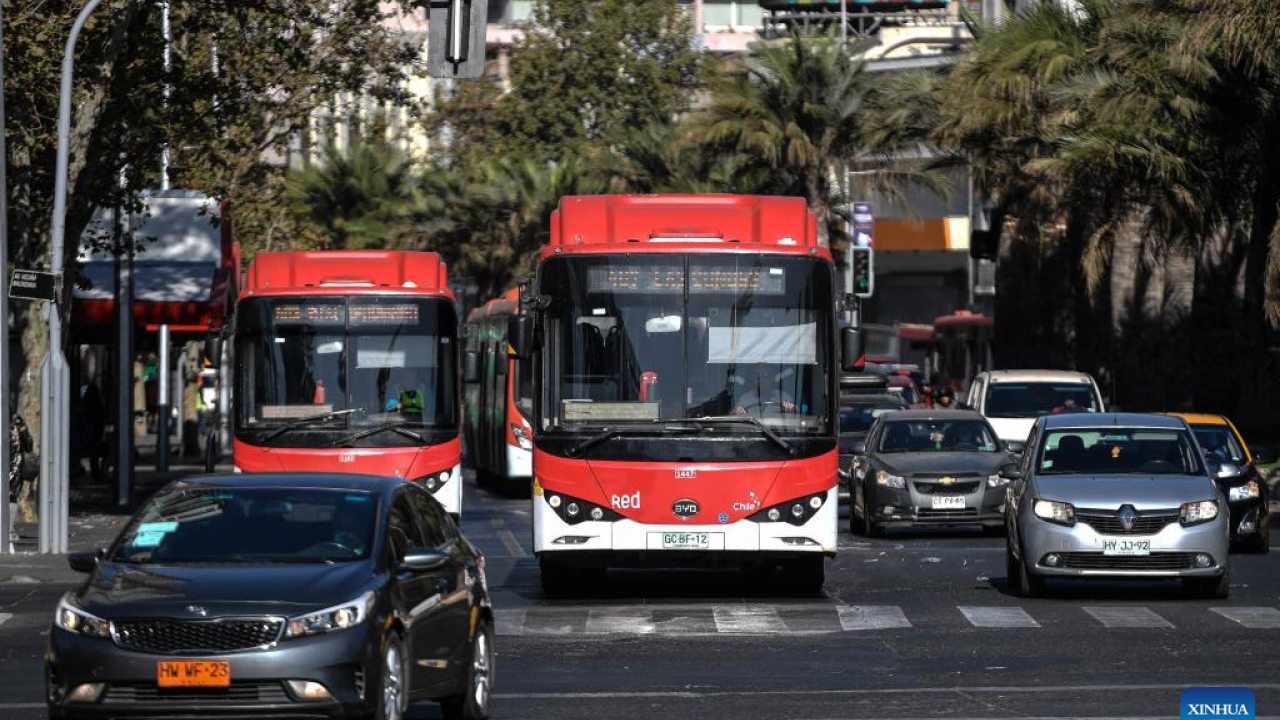
At the beginning of the month, the Chilean government reported that they received 86 offers submitted by nine interested companies, both Chilean and foreign, for the 2023 bidding process for the concession of public transport system routes.
Chile's metropolitan region will have 50 percent of its public transport bus fleet electric by 2025, following a new tender seeking to add to the 2,480 buses currently in circulation, all of Chinese origin, a "revolution in transportation."
At the beginning of the month, the Chilean government reported that they received 86 offers submitted by nine interested companies, both Chilean and foreign, for the 2023 bidding process for the concession of Red Movilidad roads, the public transport system of the metropolitan area, where more than seven million people live.
This is the first Chilean tender for roads, that is, for companies that manage bus routes in the capital, in which it was required that the units operating be 100 percent electric.
Metropolitan Public Transport Director Paola Tapia said in an interview with Xinhua that everything started in 2017, when Santiago "was a pioneer in Latin America in implementing this technology with buses brought from abroad."
"And it is a technology that was undoubtedly cutting edge and that today places us as the city, Santiago, with the most electric buses after Chinese cities. Today we have 2,480 electric buses, we will reach more than 3,500, so of the total fleet, which is 7,000 buses, they will be electric buses next year," said the official.
Tapia stressed that this "is a transport revolution that is here to stay, and is related to bus technology, to which we have also associated issues of comfort."
He stressed that electric buses currently have USB charging, Wi-Fi connection, air conditioning and a segregated cabin for the driver.
He added that the new tender is accompanied by the strengthening of the infrastructure because the city will go from having 28 electric bus terminals at present to more than 50, in addition to improvements to bus stops.
"There is an ecosystem that is advancing in terms of electromobility," he stressed.
Currently, the 2,480 electric buses circulating in the capital are of Chinese origin.
"Chinese technology has been fundamental to this revolution in public transport. They were fundamental in 2017, when, as Minister of Transport and Telecommunications, we brought the first electric buses to our country in a business model that has also been replicated in other countries and that is always observed with great interest in order to replicate this figure in other Latin American countries, and even in other parts of the world," Tapia added.
More than six years after that milestone, the director of Metropolitan Public Transport explained that the evaluation is "very positive."
"We have six different brands, which also shows a diversification of the market, beyond the Chinese origin, but very importantly, we have a positive evaluation of user satisfaction."
He added that users value the technological changes and the quality of the buses most in the last six years.
Chile plans to achieve carbon neutrality by 2050 and to have all bus fleets in the country be electric by 2040.
"The goals are high, but without a doubt the collaboration in this case between China and Chile has made it possible, whether due to all the tariff issues, due to the commercial relationship that exists, or also due to the solidity of our democracy; our functioning as a country that invites companies to participate in our bidding processes and the high interest that they have represented for different countries, is without a doubt a very positive assessment with a direct result in the provision of service," he explained.
Tapia cited a study commissioned by the company Dictuc, a subsidiary of the Pontifical Catholic University of Chile, which showed that, after six years of operation of electric buses in the capital, "the levels of polluting emissions and noise in an electric bus terminal versus a diesel bus terminal were 43 percent less polluting emissions and 50 percent less noise."
"The electric terminal becomes a good neighbor with these numbers," he concluded, adding that "the city will undoubtedly be transformed along with public transportation."










